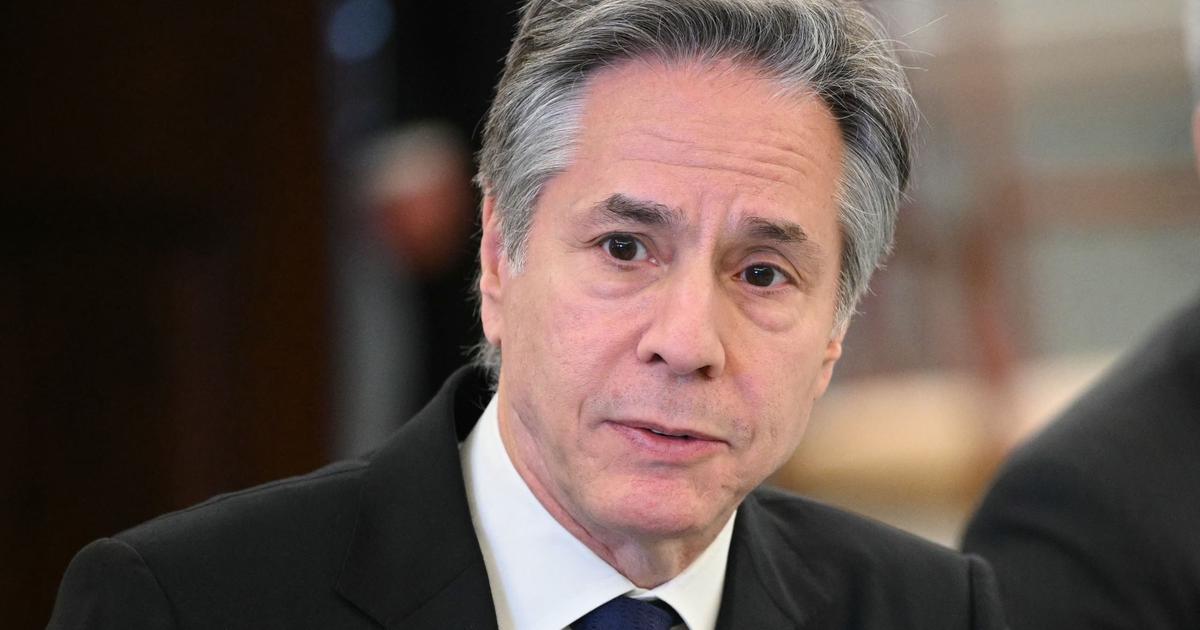The Future Fund was accused of being a "bureaucratic product" that could not develop the future. With the efforts of the Financial Secretary, Paul Chan, the SAR government finally established a "Hong Kong Investment Portfolio" that was regarded as the "Hong Kong version of Temasek".
However, compared with Singapore's Temasek, Hong Kong's growth portfolio already has "congenital defects" such as small management amount, passive operation mode, and opaque operating conditions.
Investment target operation mode is more aggressive
In 2017, Tsang Chun-wah resigned as Financial Secretary to run for the chief executive. The then Secretary for Development, Mr. Chan Mao-po, took over the post of "Cai Ye" for three terms.
He once proposed to follow the example of Singapore's Temasek in managing fiscal reserves, and began to seek a breakthrough in public finance.
In 2019, he set up an expert group to review the operation of the "Future Fund" and consider making more aggressive investments.
Later, in the "2020/21 Budget", Chen Maobo announced that he accepted the opinions of the expert group and allocated one tenth of the "Future Fund", namely 22 billion yuan, to establish a "Hong Kong Growth Portfolio" for strategic investment in and related projects in Hong Kong.
Two years later, Chen Maobo allocated another 10 billion yuan from the Future Fund to the Hong Kong Growth Portfolio, of which 5 billion yuan was used for the strategic innovation and technology fund, and the other 5 billion yuan was used for the "Greater Bay Area Investment Fund" focusing on the Greater Bay Area.
At first, the Hong Kong Growth Portfolio was regarded as the "Hong Kong version of Temasek", and the market had high hopes; but after a few years of operation, the controversy became more and more serious.
One of the major problems is that the Future Fund has its "iron financial laws", such as the investment period is ten years (the government says that the fund cannot be withdrawn before December 31, 2025), it cannot be used in non-emergency situations, and it must be used according to the The "Land Fund Resolution" was approved by the Legislative Council, but Chen Maobo's continuous actions in the future fund are suspected of "creating numbers".
For example, in 2020/21, in addition to the establishment of the Hong Kong Growth Portfolio, part of the fund's income will be directly withdrawn and put back into the fiscal reserve, with a return of 25 billion yuan in the first year.
This year, Chen Maobo announced in the "Financial Budget" that 100 billion yuan will be set aside from the accumulated income of the future fund, and a special fund will be established in the capital works reserve fund for infrastructure investment in the "northern metropolitan area".
All of these will inevitably lead to doubts about the number of "beautiful disks" in the market.
However, Chen Maobo repeatedly denied that he "made up the numbers", and reiterated that the fund's income in the future will be considerable.
Leaving aside the debate on "making numbers", the Hong Kong Growth Portfolio is indeed more aggressive than the Future Fund, which is evident from its investment objectives and operating model.
In terms of investment objectives, the Hong Kong Growth Portfolio has three investment objectives: first, to invest strategically in Hong Kong-related projects to achieve better returns; second, to consolidate Hong Kong’s position as a financial, business and innovation center; finally, to invest in long-term Increase productivity and competitiveness.
Although the Hong Kong Growth Portfolio was born out of the Future Fund, its investment objective clearly puts aside the burden of "high returns" and takes the local economy and long-term competitiveness into consideration.
In terms of operation mode, the Hong Kong Growth Portfolio no longer adopts passive investment, but uses outsourcing to general partners (General Partners, hereinafter referred to as "GP") to achieve "active" investment management: the SAR government established the Hong Kong Growth Portfolio A framework with a two-tier committee structure, namely the Governance Committee and the Investment Committee - the Governance Committee, chaired by the Financial Secretary, provides strategic oversight for the fund and provides guidance on matters such as investment criteria and asset allocation; the Investment Committee Chaired by the Secretary for Financial Services and the Treasury, which handles matters including the appointment of GPs; as for financial management, it provides administrative staff, including identifying GPs, conducting due diligence and making recommendations.
In the whole process, the SAR government does not directly participate in the investment, but is operated and responsible by eight private equity investment institutions.
Although the investment objectives and investment model of the Hong Kong Growth Portfolio are progressive compared to the Future Fund, they are far from Temasek.
Hong Wen, a member of the Legislative Council Election Committee who has been engaged in economic policy research for many years, believes that in order to realize the benefits of the "Hong Kong version of Temasek", the SAR government must clarify the strategic development of the local economy and play a "strategic" role in investing in local industries. However, the model of Hong Kong's growth portfolio has obviously failed to break through these two blind spots.
Chow Chongming criticized the lack of industrial economic research in Hong Kong.
(Photo by Ye Jiahao)
Lack of Industrial Policy Research
Talking About Painting Development Strategies
First, there is the issue of strategic economic development.
Hong Wen criticized the government's lack of "top-level design" when redesigning Hong Kong's growth portfolio: "What industries should Hong Kong develop strategically? What kind of future will the Hong Kong growth portfolio help Hong Kong achieve? What do we hope to leverage with funds? The goal is unclear."
"Top-level design" requires industrial research and policy, which has always been the weakness of the Hong Kong SAR government and even the Hong Kong academic community.
Chow Chongming, a lecturer at the Department of Applied Social Sciences at the Hong Kong Polytechnic University, explained that the Hong Kong economics community is mainly influenced by "neoclassical economics", which divides the market and the government into two main bodies, and believes that the government should minimize intervention in the market and instead invest in infrastructure.
Taking innovation and technology as an example, from the perspective of neoclassical economics, the government is responsible for funding university research, education and other infrastructure, while enterprises are responsible for putting research results into practice, which is also the consistent practice of the Hong Kong government.
"Under the framework of institutional economics, the industry chain is linked together, and the government and the market are difficult to separate." For example, Zou Chongming said that there are also scientific research departments in enterprises, and universities will also incubate innovation and technology enterprises, investing in infrastructure and intervening in the market. Boundaries are blurred.
Cao Mingxin, a student of the Department of Computer Engineering at the Hong Kong University of Science and Technology and the founder of Jigao Industrial Group Co., Ltd., shared an example with the reporter of "Hong Kong 01".
Every year, many students who are interested in starting a business form an entrepreneurial team at HKUST to apply for the start-up fund that the Science Park and Cyberport cooperate with the university. The answer is enough, it's not difficult to get... The problem is that you have incubated these projects, and there are too many "monks", what about "porridge"?" He emphasized that Hong Kong venture capital lacks an ecological environment, and there are not many investors. Inexperienced student teams have difficulty continuing to obtain financing.
Cao Mingxin, a computer engineering student at the Hong Kong University of Science and Technology and founder of Jigao Industrial Group Co., Ltd., pointed out that experienced investors are very important for entrepreneurial teams.
(Photo by Su Weiran)
What's more, for entrepreneurs like Cao Mingxin, investors are not just as simple as "giving money". "Investors will bring talents and customers to the entrepreneur, share his business experience, and help expand the market." However, the government's development of the innovation and technology industry is limited to start-up funds, and it is also highly regarded as "non-intervention in the market", and it does not take the initiative to provide start-ups with the resources needed for subsequent development.
As a result, Hong Kong's technology and innovation community can only create a large number of mayfly-like short-lived entrepreneurial projects.
"There are no 'industrial studies' subjects in Hong Kong's schools of economics and management. Economics is purely about 'government and market', but 'market' is not 'industry'," said Zou Chongming.
On the other hand, due to the lack of corresponding economic research and development strategy blueprint, the investment scope of the Hong Kong investment portfolio cannot be focused, and it is only defined as "Hong Kong-related enterprises".
"What does it mean to be related to Hong Kong?" Hong Wen questioned, "If the entire company operates overseas and finally goes public in Hong Kong, is it related to Hong Kong? Yes, but the financial industry will ultimately benefit, right? This is obviously not us. We hope to promote the model of Hong Kong's future development."
Without a clear investment scope, Chow Chongming doubts to what extent Hong Kong's growth portfolio can promote the "local I&T industrialization".
He explained that if GPs choose venture capital based on economic returns, they may prefer companies with larger potential markets and lower operating costs. For example, companies registered in Hong Kong but actually operating in the Mainland or overseas may not consider more interaction with the local economy. For a strong company, indicators that are closely related to local economic development will be ignored. "For example, how many job opportunities can this company create in Hong Kong? Or can its company drive the upstream and downstream industrial chains in Hong Kong?"
When investing in overseas companies, Temasek will consider the local economy and attract companies to land in Singapore.
(file picture)
Architectural ills have not broken through
Lack of local perspective on investment
Secondly, the model of outsourcing GP investment management has not broken through the key bottleneck of “establishing an entity”. The government still manages funds indirectly and does not need to take responsibility. Therefore, the “Hong Kong Growth Portfolio” lacks a “local perspective” to promote economic structural transformation.
What is a "local perspective"?
Let’s start with the example of Temasek.
"In the eyes of Hong Kong people, Temasek should be very 'rude'." In June this year, Hong Wen proposed a motion of "making good use of the 'Future Fund' and the 'Hong Kong Growth Portfolio' to promote the diversification of the industrial structure" at the Legislative Council meeting. In order to write the proposal, she spent a lot of time “learning” from Singapore’s Temasek, and learned that when Temasek invests in overseas companies, it will make the following requirements: the company should set up a branch in Singapore, and it must provide a certain number of local jobs, and It is stipulated that a certain proportion of local people must be in the management, and enterprises must invest a certain proportion in Singapore, etc.
"It seems like a 'rough' method, Temasek has brought industries or companies that Singapore needs into the local area. This is not unique to Singapore, many government venture capital institutions are like this, including the mainland." Hong Wen said.
Bloomberg reported in May that the number of Singapore citizens holding senior positions in Singapore's financial industry increased by 80% compared to 2016.
According to the Monetary Authority of Singapore (MAS), there are now more than 3,000 local citizens working as executives in the financial industry.
By the end of 2020, about 71% of the financial industry were Singapore citizens; and according to a survey conducted by MAS in 2020, 46% of executives with more than 15 years of relevant work experience were Singapore citizens.
The report also pointed out that MAS has been carrying out the "Singapore Core" (Singapore Core) program, consulting with senior leaders of the financial industry on staff composition and development, and working with companies to build a strong local leadership team.
"Many indicators of Hong Kong's international financial center surpass that of Singapore, but how many local people benefit? Not to mention local people, there are not many local institutions." Hong Wen said, "Hong Kong can accommodate many institutions and many people. It’s very good to provide services, and I’m not trying to kill that. But, how many local financial institutions are world-class? How many locals are in the top institutions in Hong Kong, working in the top management?”
Not only does it provide jobs for the local people, Singapore will also actively introduce technology companies it needs through its sovereign wealth fund to promote the upgrading and transformation of local technology. One of the new car manufacturers in China, “NIO”, is one example.
Under the turmoil of Chinese stocks, Weilai Automobile first returned to Hong Kong for a secondary listing, and then listed on the Singapore Exchange in the form of introduction.
The SGX, whose liquidity and trading volume are not as good as those of the Hong Kong Stock Exchange, is able to attract Weilai Automobiles without the support of the two shareholders behind Weilai, the Government Investment Corporation of Singapore (GIC) and Temasek.
Li Bin, the founder, chairman and chief executive officer of NIO, publicly stated when he rang the bell on the SGX that he would take advantage of Singapore's advantages as an international economic and technological center to carry out in-depth cooperation with local scientific research institutions in Singapore to establish artificial intelligence and automation in Singapore. Driving R&D Center.
NIO was listed on the Singapore Exchange last month, and its shareholders include GIC and Temasek Holdings.
(Singapore Exchange)
Hong Wen pointed out that the "economic security" thinking has always run through Singapore's economic development, "In key industries, they have many reliable people and companies, do we have them? We don't have such strategic thinking, we give money to those few. GP to invest, can it solve the problem?”
Regardless of the GP's investment vision, the current governance structure of the Hong Kong Growth Portfolio is also difficult to play as a "Hong Kong version of Temasek".
The Governance Committee headed by the Financial Secretary and the Investment Committee headed by the Treasury Bureau are bureaucratically designed institutions, but they do not manage funds continuously and directly, nor do they take the initiative to integrate Hong Kong's development strategies with investment strategies.
For example, during the investigation, Hong Wen had a conversation with a member of the governance committee. The other party complained that "committee affairs are a waste of time", "there are several meetings a year", "I don't know what to do at all, and I don't do anything"; The other party even criticized that the Hong Kong growth portfolio has not formed the corresponding thinking and mechanism, and failed to play the role of the governance committee.
Even more puzzling is that the operation of Hong Kong's growth portfolio is extremely opaque.
The governance committee and investment committee of indirectly managed funds are publicly available, but the eight GPs who directly execute and are responsible for the investment are long-term anonymous.
Hong Wen interviewed five governance committee members, all of whom said "I don't know" and had no way of knowing what companies she invested in and what the returns would be.
"Are these eight GPs really helping the group make money? It took 32 billion yuan, but what if it loses? Hong Kong suddenly disappeared with 32 billion yuan. Who is responsible? We don't know these things now." Zou Chongming said .
From the Exchange Fund to the Future Fund to the Hong Kong Growth Portfolio, the SAR government has indeed tried to reform the conservative style and short-sighted investment in the traditional philosophy of public finance.
However, every difficult step in reform is either "relieving head pain and foot pain" or "new wine in old bottles", all of which have failed to resolve key bottlenecks.
"Future funds need to be "future", and growth portfolios need to be "growth"." This is the theme of Hong Wen's recent newspaper articles, and it is also a proposal that she has been researching and revising repeatedly in the past few months. She hopes to reform the above-mentioned funds. The starting point is to push the SAR government from passive defense to active offense, from "laissez-faire" to "moderately proactive".
The details are published in the 331st issue of "Hong Kong 01" electronic weekly published on August 22, 2022.
Sovereign Fund.
1 | How far are we from the "sovereign wealth fund"?
Sovereign Fund.
2|Exchange Fund - the sovereign fund of the wealthy treasury following the Hong Kong-British style of seeking stability.
3|Future Funds - "bureaucratic products" sovereign funds that cannot develop the future.
4|Hong Kong Growth Portfolio - the "Hong Kong version of Temasek" in name only





/cloudfront-eu-central-1.images.arcpublishing.com/prisa/3I74UEXLYRBBRPGPSGWNN6WXH4.jpg)

